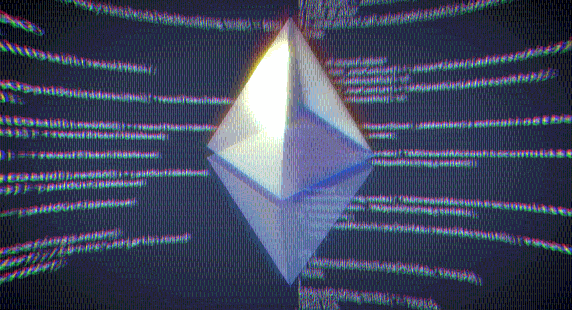IMF head Christine Lagarde said “it may not be wise to dismiss virtual currencies” like bitcoin and ethereum at bank of england conference.”=”


The state of Illinois is testing a new way for people to prove their identities, albeit without the need to request their birth certificates and wait weeks for it to arrive in the mail. The state aims to give citizens more control of their data, as well as provide solace in knowing it’s more secure than ever.
To accomplish this task, the state is turning to the same blockchain technology that companies like Bitcoin and Ethereum utilize for their own networks. In August, the Illinois Blockchain Initiative — a collaboration launched by the state to explore blockchain and distributed ledger technology — announced it’s partnering with self-sovereign identity solutions firm Evernym to create an online ledger that’s only accessible to the owner of the ID and any other individuals they’re granted access. It’s very similar to how the technology could be used to track and share information between hospitals.

Bitcoin was hit by a double whammy this week. On Tuesday, Jamie Dimon of JP Morgan declared that Bitcoin is a fraud that will “blow up”. Then, just this morning, a Bitcoin exchange in China announced that it would shut its doors in response to verbal pressure from regulators and an uncertain regulatory environment.
Don’t ya just love it when bad news breaks on Bitcoin? I sure do! It creates a buying opportunity. After all, just look at what happened after the last five bouts of bad news: [updated Oct 2017—Click to reverse colors & enlarge]
In each case, the Bitcoin exchange rate dropped—very briefly—and then climbed higher with renewed vigor. Heck it, doubled from $2400 to $4800 in just the past month! But here’s a the real question: Does either bad news events have legs? Does it spell the end of Bitcoin adoption and enthusiasm, at least for now?
After all, if it were discovered that the math behind Bitcoin were flawed, and that anyone could create forged coins, the empire would come tumbling down. In my book, this would constitute a crisis. But what about now? Do these two damning events—and a 35% correction in the past week—constitute a long-term crisis? To answer, we must first determine if public fears over these two events are credible…
China and JP Morgan: (a) A frightened authority (b) Simple Ignorance
Like most governments, the Chinese are concerned that the growing flight to Bitcoin is impacting liquidity of their national currency. [A superb presentation by Andreas Antonopoulos—Click it, after you read this article]. They are also concerned about the large number of Bitcoin exchanges that operate outside of a tight regulatory framework. They obscure the flow of money in and out of the country and they are a clear scapegoat for tax evasion or other criminal activity. Like any agency charged with financial regulation, the Chinese seek to reign in and regulate these maverick exchanges.
It is interesting to note that the Chinese government is not discouraging Bitcoin mining or even personal savings—only the proliferation of unlicensed exchanges and quasi-anonymous users. After all, More than 50% of all mining is done in China, and it helps to balance the loss of liquidity in the national currency.
Bitcoin is experiencing increased adoption—not just as a payment mechanism—but as a new form of stored value. Is this is a bad thing for governments? Surprise! When a government loses control over its own reserve and monetary policy, it may present more of an opportunity than a threat—for both citizens and governments. Gradually, economists, treasury secretaries, reserve board governors and monetary tsars will are coming to the same conclusion. But regardless of your position on this point of debate, here is a fact that is less controversial…
When governments attempt to restrict an activity that cannot be economically monitored or enforced—or at least when they attempt to do it in a way that leaves no relief valve for hobbyists, business, commerce, research or NGOs—they ultimately fuel the activity that they set out to stifle. Ultimately, if the public cannot discern a reasonable basis for government censorship or excessive restrictions, it leads to interest, innovation, adoption and the emergence of hot new markets.
Consider, again, the graph of Bitcoin price –vs- Bad news events at the top of this page.
 On each date highlighted above, there was a damning piece of information that should cause early adopters to reconsider their enthusiasm for Bitcoin. In fact, the Hearn Dump really should have ended the whole party. A core developer sold off his entire BTC savings and claimed that the experiment was a failure. He published an article with his reasons for believing that Bitcoin was dead. Likewise, the SEC decision to prohibit the creation of an exchange traded fund (the Winkelvoss ETF), it sent a clear signal that governments really didn’t consider cryptocurrencies to be an asset at all.
On each date highlighted above, there was a damning piece of information that should cause early adopters to reconsider their enthusiasm for Bitcoin. In fact, the Hearn Dump really should have ended the whole party. A core developer sold off his entire BTC savings and claimed that the experiment was a failure. He published an article with his reasons for believing that Bitcoin was dead. Likewise, the SEC decision to prohibit the creation of an exchange traded fund (the Winkelvoss ETF), it sent a clear signal that governments really didn’t consider cryptocurrencies to be an asset at all.
But the graph demonstrates that each piece of “bad news” fueled a miniature rally. That’s because Bitcoin has none of the elements of a pyramid scheme. It is not an MLM and it cannot be manufactured or controlled by any organization. Rather, it is an exercise in pure supply, demand and market recognition. It is pure adoption mechanism that leads to a two-sided network. It’s benefits multiply as more users join the party.
What about Jamie Dimon at JP Morgan? He says that Bitcoin will crash.
Bitcoin has had a rocky road these first 8 years. Major exchanges have been bankrupt or worse, enormous criminal conspiracies were among the early adopters, the SEC has prohibited the creation of an ETF based on cryptocurrency, rogue spin-off coins are driving a wedge among users, and there are serious problems related to scaling and governance. A casual observer might wonder who is in control and who can be held responsible? After all, the idea of an economic mechanism that is altered by democratic—but decentralized—factors is new and radical. How can Bitcoin evolve, adapt and grow in the absence of an authority at its heart?
This confusion arises from the newness and unfamiliarity of blockchain architecture. Skepticism is natural. Indeed, Bitcoin is guided by an authority, but it doesn’t reside at the center of the network. It resides at the edges. This is the concept behind Proof-of-Stake and Proof-of-Work. Unlike a classic authority, your will matters just as much as anyone else’s. It is exceptionally democratic, self-enforcing, and resistant to gaming.
This is a difficult concept to wrap our heads around, because it is so different than we were taught and it is different than we have experienced for centuries. For this reason, Jamie Dimon’s statement that there is nothing behind Bitcoin presents a buy opportunity for individuals who were late to the table. Jamie may not yet understand intrinsic value, but we can educate ourselves. Bitcoin has more standing behind it than the US dollar.
… But don’t take this as investment advice. Bitcoin should not be thought of as an investment. It is the future of money. Speculation (both day trading and long term buy-&-hold) act to retard the eventual adoption of Bitcoin as a serious monetary instrument. Although I have Bitcoin, I do not encourage people to think of it as an investment. It is more important that it be used for ordinary business and commerce:
When the fraction of Bitcoin transactions servicing these consumer and business activities exceeds the fraction driven by savers and speculators, the dominos will begin to fall rapidly.
Articles about Jamie Dimon and JP Morgan…
Can we draw a conclusion? Certainly, we can. And, we can toss in a prediction. It’s not even a high risk prediction. The recent pullback has no fundamental basis. No legs at all. The two “bad news” are not just a  red herring—they present a buying opportunity. If I were allowed to give investor advice (I am not; and I don’t), I would express my opinion with more verve and obvious conviction.
red herring—they present a buying opportunity. If I were allowed to give investor advice (I am not; and I don’t), I would express my opinion with more verve and obvious conviction.
Caveat Emptor (Everything comes with a disclaimer)…
I am a Bitcoin educator, proponent, early adopter and blockchain consultant. But here is the contradiction: Although I am also a Bitcoin investor, I discourage others from treating Bitcoin as an investment. Use it, but please don’t save it!
Why do I discourage others from investing in Bitcoin?
It’s not that I don’t believe that Bitcoin will increase in exchange value. It will rise spectacularly, as adoption grows. But Bitcoin will not become ubiquitous and trusted until the majority of coins are recycled into the market for payments, settlement, loans, interbank transfers, escrow, contract settlement, etc. That is, its use for business and commerce must exceed the fraction of trades that are driven by savers and speculators. Until this happens, Bitcoin will remain volatile. It will be the subject of suspicion. It won’t be used for large settlements and it won’t become the money itself.
Speculation acts against fluidity. It won’t block the eventual acceptance of Bitcoin as a global currency. Hoarding is not a deal stopper. But It retards momentum and delays the inevitable.
Philip Raymond co-chairs CRYPSA, produces The Bitcoin Event, edits A Wild Duck and is moderator of LinkedIN Bitcoin P2P, the largest discussion group of it’s kind. He is keynote at this year’s Digital Currency Summit in Johannesburg and sits on the New Money Systems board at Lifeboat Foundation. Use the contact form to inquire about a live presentation or consulting engagement.

For the unwary, ICOs represent an even bigger risk, as uncertainty about how they should be regulated means most lack even basic protection of securities laws that governed the dotcom IPOs. As pure digital events, the online fundraisings are also exposed to familiar internet frauds, from phishing scams used to rip off the unwary to the hacking of the underlying software underpinning the new ventures — the fate that befell the first prominent ICO last year, for a company called the DAO.
Flood of initial coin offerings is aimed at bypassing Google and Amazon, but sceptics fear a bubble.
On August 1 2017, the value of a Bitcoin was at $2,750 US dollars. Today, just over one month later, it is poised to leap past $5,000 per unit. With this gain, many people are asking if Bitcoin has any genuine, inherent value. Is it a pyramid scheme? —Or is it simply a house of cards ready to collapse when the wind picks up?
In a past article, I explained that Bitcoin fundamentals ought to place its value in the vicinity of $10,000.* (At the time, it was less than $450, and had even fallen to $220 in the following year).
For many consumers viewing the rising interest in Bitcoin from the stands, there is great mystery surrounding the underlying value. What, if anything, stands behind it? This is a question with a clear and concise answer. In fact, it has a very definitive and believable answer—but it is easiest to understand with just a little bit of historical perspective.
At one time, G7 fiat currencies were backed by a reserve of physical Gold or the pooling or cross-ownership of other currencies that are backed by gold. That ended in 1971 when the Bretton Woods agreement was dissolved by president Richard Nixon in Ithaca NY.
Today, US currency is backed by “The good faith and credit of the American worker” (This is the government explanation of intrinsic value). But in truth its future value is loosely tied to one simple question: Does the typical vendor or consumer (for example, someone accepting a $20 bill in exchange for a movie ticket or 2 large pizzas) expect it to buy these same things in the next few months?
A considerable number of speculative components contribute to the answer. For example:
This list is not exhaustive, but all constituents boil down to two fundamental concepts: Supply-and-demand and How long will demand last?
The dollar is an invention of a transient government. Even with a long history and complex banking framework, it is no more real than Bitcoin. Supply and demand for any commodity is based on popular recognition, anti-counterfeit features, innate desire and public goodwill. The real question is what contributes to the desire to own or spend Bitcoin?
The answer is that Bitcoin is backed by something far more reliable and trustworthy than the transient whim of elected legislators. It is backed by something that carries more weight than the US government. What could possibly guaranty the value of a Bitcoin? After all, it does not convey ownership in gold, and it has no redemption guarantee. There is no engraving of Caesar on the coin. (In fact, there is no coin at all!)…
Answer: Bitcoin is backed by math, a firm cap, a completely transparent set of books, and the critical mass of a two-sided network. Although it can be taxed (like any asset), it can be owned and transferred with impunity and without recourse. These may not seem like critical components of intrinsic value, but they are. In fact, they define intrinsic value in the modern era.
Related:
Philip Raymond co-chairs CRYPSA, produces The Bitcoin Event, edits A Wild Duck and is keynote at this year’s Digital Currency Summit in Johannesburg.


With Russia looking to cure its economy of a hydrocarbon addiction, a consortium of the country’s biggest banks is proposing that it explores a different kind of gas for the answer.
The lenders, including Sberbank PJSC and VTB Group, aren’t developing gas of the natural variety. It’s also the name of a virtual unit based on the blockchain of ethereum, the world’s biggest cryptocurrency after bitcoin. The banks are hoping that by adopting the technology they will make payments safer and faster, while thrusting Russia to the forefront of a trend that’s transforming the financial industry.

Yesterday was D-Day in the Bitcoin world: On Tuesday, Aug 1st 2017, Bitcoin Cash (BCH) forked off of Bitcoin (BTC). For anyone with control over their wallet and private keys, they now have an equal amount of BTC and BCH.
I have a Bitcoin wallet. Yet, I don’t have any new Bitcoin Cash—and I have no one to blame but myself. Will I ever get the BCH associated with my pre-fork coins? I think that it is likely, though certainly not assured. If not, it will still be my fault. After all, I had fair warning from the company that I trust as custodian of my assets.
A Cryptocurrency Mantra:
“Woe be the person who trusts decentralized cash to a custodian”
I trust Coinbase for good reason. I left my BTC in my Coinbase wallet and vault throughout the fork. Let me tell you how I view the risks of failing to remove my coins before August 1…
2. Coinbase warned  they had no plan to support BCH—not even for withdrawal after a fork.
they had no plan to support BCH—not even for withdrawal after a fork.
I accepted this 2nd warning, even though their reasoning and motives were terribly weak. But, today, I feel very sore. I need a morning after pill! Bitcoin still trades at the level of the past week—about $2700 US/BTC. But my non-existent BCH holdings have significant value! It was briefly as high as $750 per coin, and is now trading at $475. This means that even if I have no desire to save or spend the new coin, I no longer have the option to liquidate my forked asset. I lost a slam-dunk opportunity to capture 17½%.
We’re not talking about a theoretical gain or a gain that assumes liquidation at a momentary spike. We’re talking about right now—a missed opportunity to pocket thousands of dollars!
Am I angry? Not really. I am disappointed at my lack of initiative. I have only myself to blame. For the record—I don’t believe that I have a reasonable legal claim against Coinbase. After all, they warned me! But,  I believe that they will give me my forked coins—eventually. They have already acknowledged to conspiracy theorists that they will not keep the forked BCH, in the event that they create a conversion mechanism. In that case, they will allow withdrawal by the owner of the associated BTC. Now that they see dramatic fractional value, how could they not complete the fork?!
I believe that they will give me my forked coins—eventually. They have already acknowledged to conspiracy theorists that they will not keep the forked BCH, in the event that they create a conversion mechanism. In that case, they will allow withdrawal by the owner of the associated BTC. Now that they see dramatic fractional value, how could they not complete the fork?!
Where Does This Leave Me?
I’m not poorer today than I was yesterday, and I still have the same value in Bitcoin. But, I missed a zero-risk opportunity to gain 17½% overnight. It was staring me in the face and I passed it up. At least I draw comfort in my confidence that Coinbase will complete the fork. Please, Coinbase: Complete the fork!
Philip Raymond owns Bitcoin, but has no Bitcoin Cash. He co-chairs CRYPSA and Bitcoin Event, is columnist & board member at Lifeboat Foundation, editor at WildDuck, and keynote speaker at Digital Currency Summit in Johannesburg. He is a leading author at Quora.

Exponential Fever. The business world is currently gripped by exponential fever. The concept came to prominence with Moore’s law — the doubling every 18–24 months of the amount of computer power available for $1,000. The phenomenon has since been replicated in many fields of science and technology. We now see the speed, functionality and performance of a range of technologies growing at an exponential rate – encompassing everything from data storage capacity and video download speed to the time taken to map a genome and the cost of producing a laboratory grown hamburger.
New Pretenders. A wave of new economy businesses has now brought exponential thinking to bear in transforming assumptions about how an industry works. For example, AirBnB handles roughly 90 times more bedroom listings per employee than the average hotel group, while Tangerine Bank can service seven times more customers than a typical competitor. In automotive, by adopting 3D printing, Local Motors can develop a new car model 1,000 times cheaper than traditional manufacturers, with each car coming ‘off the line’ 5 to 22 times faster. In response, businesses in literally every sector are pursuing exponential improvement in everything from new product development and order fulfillment through to professional productivity and the rate of revenue growth.
Stepping Up. For law firms, the transformation of other sectors and their accompanying legal frameworks creates a massive growth opportunity, coupled with the potential to bring similar approach to rethinking the way law firms operate. While some might be hesitant about applying these disruptive technologies internally, there is a clear opportunity to be captured from helping clients respond to these developments and from the creation of the industries of the future. To help bring to life the possibilities within legal, we highlight seven scenarios that illustrate how exponential change could transform law firms over the next 5 to 10 years.
Rise of the ‘Exponential Circle’. Our continuing programme of research on the future of law firms suggests that we will see exponential growth for those firms who can both master the legal implications of these technologies for their clients and become adept at their application within the firm. By 2025, we could indeed have witnessed the emergence of an Exponential Circle of law firms who have reached ‘escape velocity’ and left the rest behind.
